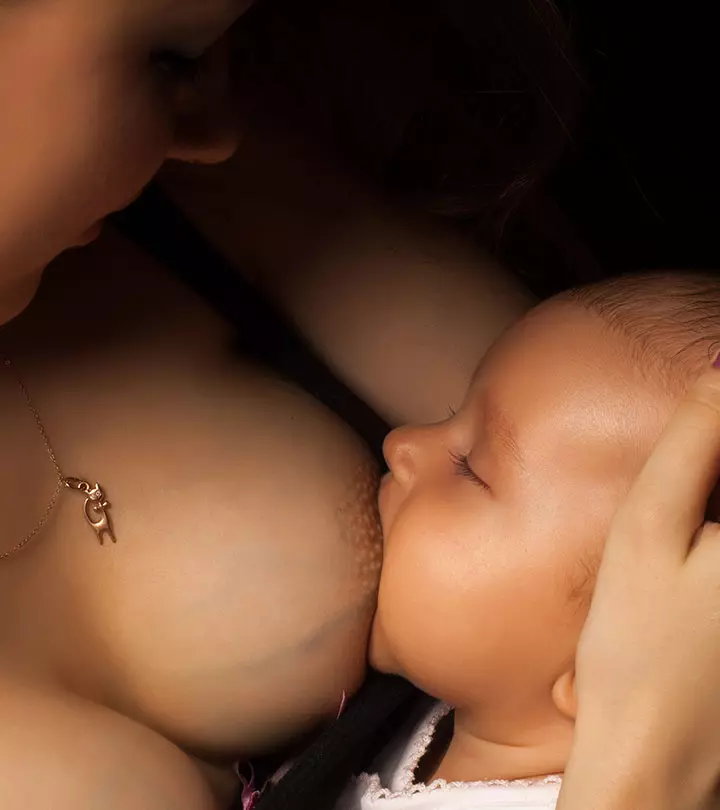

Image: Shutterstock
New mothers become quite anxious about whether they will be able to produce enough milk for their young ones. And, the anxiety is amplified when the baby hits a growth spurt, and demands a feed every half hour, even though he seemed satisfied 20 minutes ago.

And, this is when most moms panic. ‘Is something wrong with me, or is it my baby?’ is one of those horrible thoughts swimming in your head. How come, my friend, who became a mom last month can feed and satisfy her little one? And, after sifting through breast pumps, checking filling bottles, and reading pregnancy magazines, you’re still confused. And, you may even go as far as to think that women with bigger breasts produce more milk than you can.
And, if this sounds like you, well let us enlighten you. The size of the breast and the amount of milk you produce aren’t related, according to most experts.
It turns out that while women’s breastmilk storage capacities could vary, it isn’t really determined by the size of the boob. Lactation consultant Pinky McKay, a mother of five, vehemently agrees with this claim.
And, the conclusion has been backed by ultrasound studies conducted by Dr. Peter Hartmann at the University of Western Australia, which found that the amount of milk produced by normal breastfeeding women over a period of twenty-four hours is more or less the same. But, the storage capacity could vary up to thrice as much.
At the same time, McKay also says that the breast size doesn’t really have any effect on the ability to produce milk. In fact, a woman with a small breast size could supply more milk if the breasts are constituted by ample glandular tissue and less fat, rendering a better storage capacity. On the other hand, a larger breasted woman might have less glandular tissue and more fat in the breasts and thereby lesser room to contain milk.
Irrespective of the storage capacity of the breast, your baby is said to be well-fed if you know when she sends hunger signs, and you feed her timely. You might feed her more intermittently, but that doesn’t mean your baby isn’t receiving an adequate supply of milk. McKay says it is simply equivalent to drinking “either shot glasses full of milk or jugs.” You could drink an entire mug of milk in one go, or take sips. It is pretty much the same for your little one.
While McKay recommends that you allow your baby to drain your breasts of milk completely, your lactation consultant may have told you to alternate your child’s feeding on both breasts, keeping the feeding session to twenty minutes each side. It provides for emptying both the foremilk and hindmilk for your baby. On the other hand, it also helps produce milk on a demand-supply basis.
So while a normal breastfeeding woman should have no problems irrespective of the breast size when it comes to feeding her child, medical conditions likely mammary hypoplasia or insufficient glandular tissue could affect the milk supply.
In all, your breast size shouldn’t affect the milk supply.
Community Experiences
Join the conversation and become a part of our nurturing community! Share your stories, experiences, and insights to connect with fellow parents.











